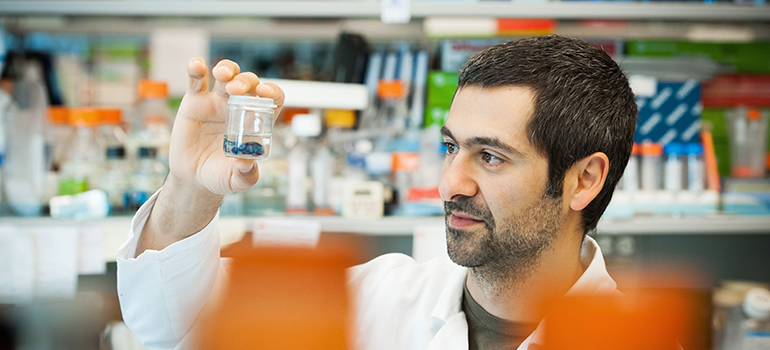Turtles are really slow, right down to their teeth. Yes, teeth.
Even though turtles lost their teeth 150 to 200 million years ago, UBC dentistry researcher John Abramyan has identified still-present ‘tooth-specific’ enamel genes in the western painted turtle – the only turtle native to B.C.
Abramyan’s work helped to complete the turtle’s genome map – the first time the genome of any of the approximately 330 species of turtle has been analyzed. The genome was mapped by scientists from the Genome Institute at Washington University in St. Louis, Missouri, and led by UCLA Prof. Brad Shaffer.
“We assumed their tooth genes would have long ago disappeared from the genome,” said Abramyan, a post-doctoral fellow in the Faculty of Dentistry Richman Lab. “When we look at birds that lost their teeth 100 to 80 million years ago, their tooth genes are there, but already highly mutated. We see the same thing in baleen whales, which lost their teeth even after birds did.”
Tooth genes still present
Understanding which genes function in enamel production is vital given that enamel loss is an irreversible dental problem.
Turtles once had a complete set of teeth like most other animals, whereas now all turtle species have beaks.
Generally, once an organism stops producing teeth, the genes specific to teeth start to mutate and become non-functional, Abramyan explained.
“In turtles, however, most of these tooth-specific enamel genes were still present and in pretty good shape despite having lost their teeth well before birds even evolved, about 150-200 million years ago. This indicates that turtles have a really slow mutation rate,” he said.
Understanding the genetics of turtle teeth may not only shed light on the evolutionary reduction of teeth in other animals such as the platypus, but may also help explain the formation of enamel.
Understanding how enamel forms and which genes function only in enamel production is vital given that enamel loss is an irreversible dental problem.
Strange but resilient
Abramyan says there is more to the turtle than its lost teeth, and the reptile is a potential model organism.
“Turtles are so strange physically and physiologically. They have this slow rate of evolution, yet were able to evolve crazy things like their shell, the ability to survive freezing, and to live an extremely long time,” he said.
Understanding these mechanisms may help us understand diseases like cancer, which is caused by mutation, as well as heart attacks, strokes and other situations where oxygen is cut off or where extreme environmental situations pose a threat, said Abramyan.

